CES was back to form in 2023, and health tech proved to be one of the major themes throughout the show. This wasn’t just about gadgets but also pertinent data that helps you live better and learn more about certain aspects of your health.
Consumer tech is reaching further into all that, going beyond just tracking movement and sleep the way smartwatches and fitness bands do. Some of the products noted here will be available this year to consumers, whereas others are tailored to medical personnel to work with patients. I’ll make that clear as I go along.
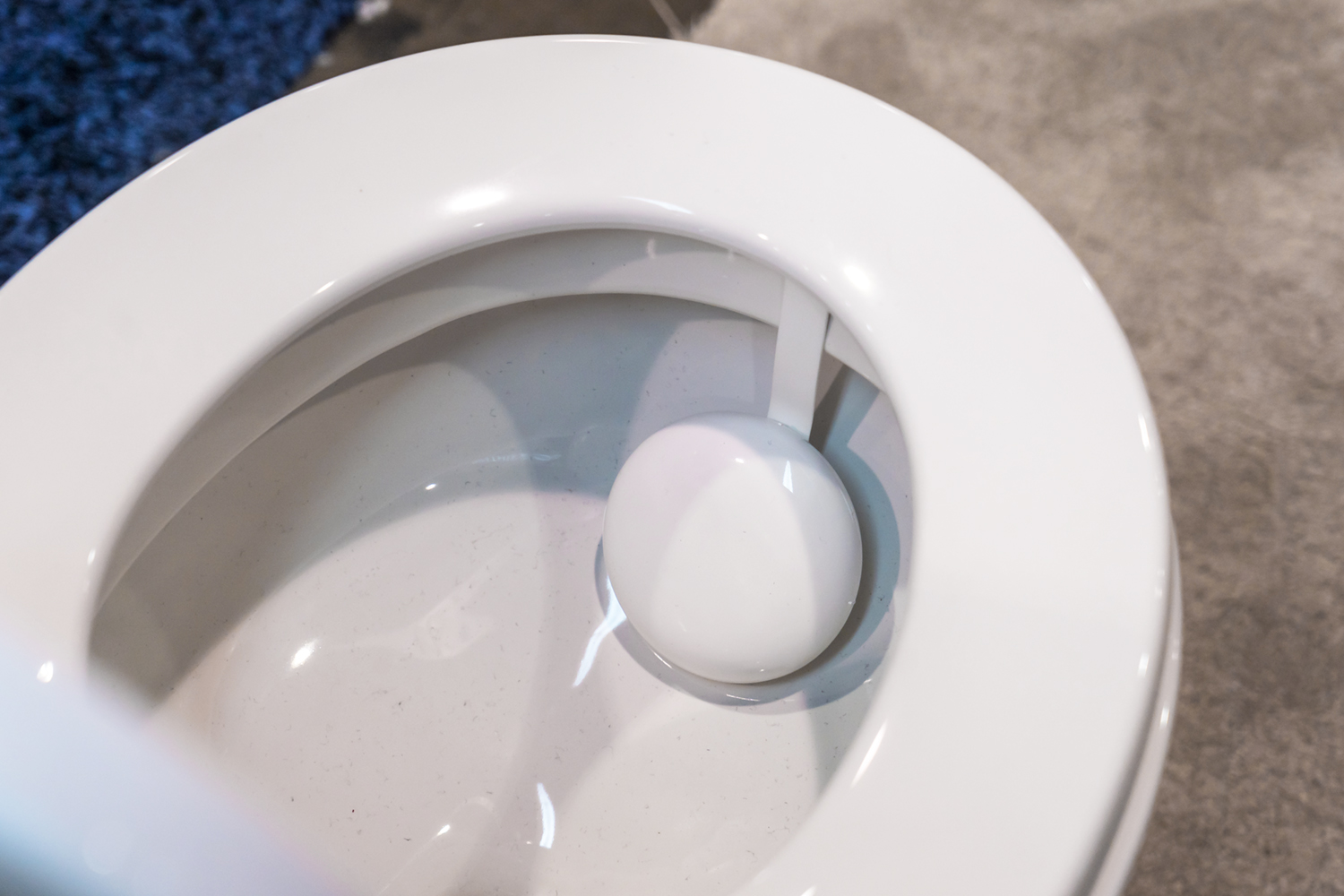
Doing home urine tests
The Withings U-Scan stood out to me as one of the best of the show because it enables you to do your own daily urinalysis at home. The pebble-shaped device sits in the toilet, and when you pee on it (or around it), it collects the urine, analyzes it, and then sends the data over to the Withings Health Mate app on your phone.
Urine tests can check for a variety of biomarkers based on the 3,000 metabolites found in urine, which is why the U-Scan comes with different cartridges you can insert inside the device. Among the two to start will be the Cycle Sync, aimed at women for predicting cycles and ovulation windows based on hormonal information. It will measure hydration and pH levels for other key biomarkers, with data that can be super helpful during pregnancy. The other is Nutri-Balance, focusing on metabolic intake to optimize daily hydration and nutrient levels. It shows gravity, pH, vitamin C and ketone levels, along with details on carb balance, even going as far as recommending what you can do to get active or eat differently to improve your numbers. A third cartridge is for medical professionals to administer to patients, so wouldn’t be available to consumers.
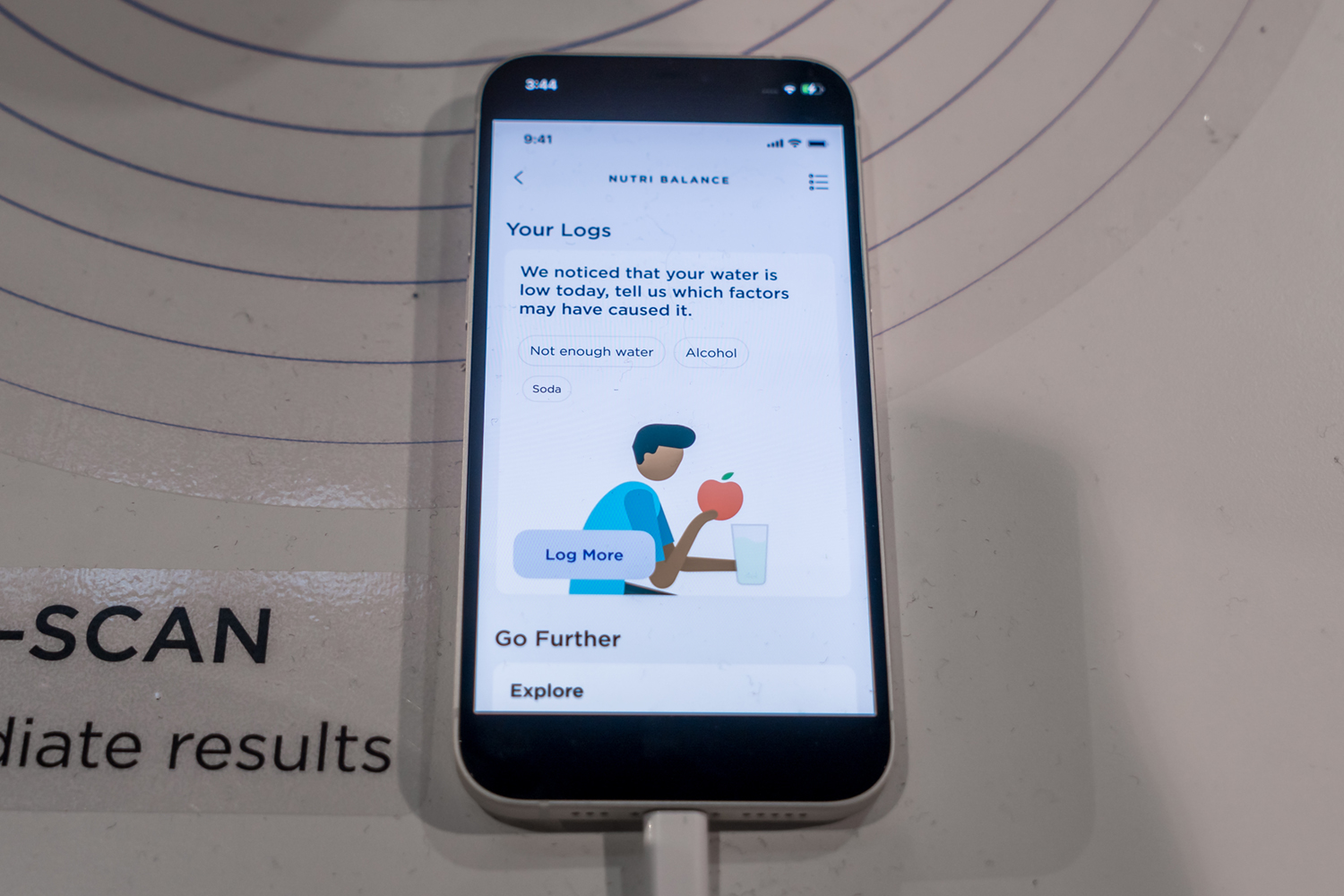
The U-Scan is already approved in Europe and needs Health Canada and FDA approval in Canada and the United States, respectively, to sell as certified medical devices. You could theoretically buy it in Europe and use it anywhere, though you will need to replace cartridges every three months.
Other companies and startups are also trying to do similar things. Olive is a startup looking to achieve the same results using optical scanners arrayed around the toilet bowl. Vivoo sticks out a strip that it then retracts to analyze and send the info to a dedicated app. Korean startup Special Zone Master wants to take it even further and analyze your stool, though details were murky over how that would actually work.
Doctor’s tools get smaller
How about taking a stethoscope or defibrillator with you anywhere? Maybe a pocket-sized blood pressure monitor? Or even a portable ultrasound device small enough to fit in your pocket?
Toronto-based NuraLogix demoed new software that could read vital signs and measure blood pressure through face detection from your computer’s webcam or camera on your smartphone or tablet. You can try out a basic level of the technology through the Anura app on iOS or Android, but the version at the show is more advanced and designed for doctors to see readings in real time during virtual consultations or check-ups. This way, they can see BPM and other vital signs while talking to patients rather than waiting to see results.
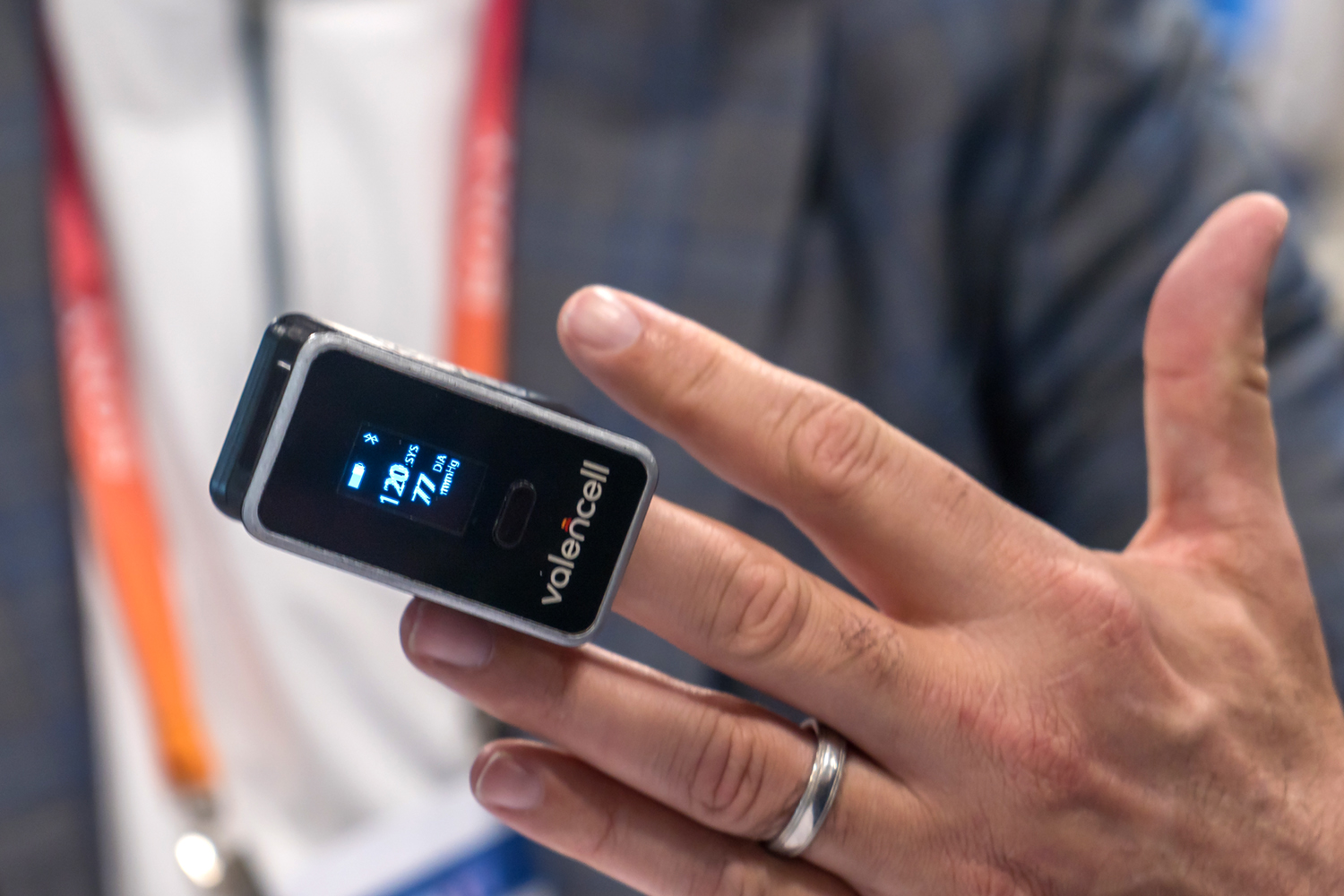
Valencell demoed a small clip for a different cuffless BPM measurement methodology. It looks like a pulse oximeter, but it actually has photoplethysmography (PPG) sensors to track much more than that. This is the same company that developed the PPG sensors you see in smartwatches from Samsung, Huawei, Suunto and others, so it has a pedigree in this area.
Aevice Health, a Singaporean-based firm, showed an advanced stethoscope called AeviceMD that can consistently track respiratory signs, including breathing and wheezing and send the results a mobile app. It can detect lung issues related to asthma and COPD (chronic obstructive pulmonary disease) and serve as an early warning system in case things get worse.
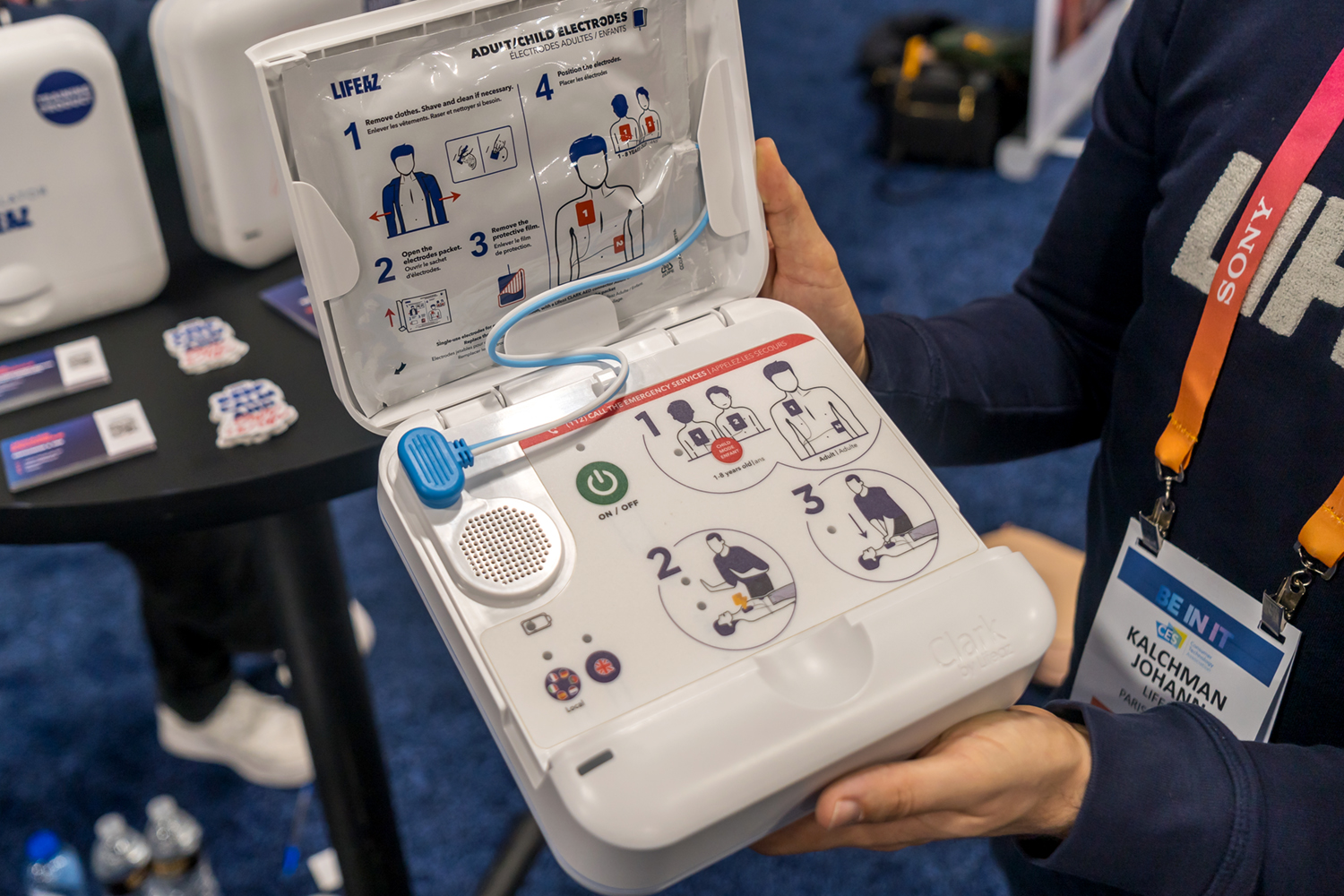
French company Lifeaz brought in a portable defibrillator that is considerably smaller than those in hospitals and ambulances. The idea here is to have it handy in the crucial four minutes after the cardiac arrest when it’s the most possible to save one’s life. It’s developed for anyone to use, so no professional training required, and since it’s connected, Lifeaz can ensure it’s always functional and working properly should the need arise.
Opteev Technologies unveiled a breathalyzer called ViraWarn that it says can detect whether or not someone has COVID, the flu or RSV. The whole process takes 60 seconds, requires no nasal swabs nor any other invasive procedure. You breathe into it twice, and the LED lights up to indicate a negative or positive result. There’s a cartridge inside that you would need to replace after a positive result or after two weeks of daily testing (negative).
All of these devices are pending FDA and Health Canada approval, so aren’t readily available yet, but they’re likely coming sooner than later.
At-home imaging
General Electric designed a portable ultrasound device so small it could fit in your pocket. It won’t be available to consumers, but what it can do could literally play a lifesaving role for doctors and paramedics. Imagine a situation where first responders can do a scan on a patient at the scene, or nurses could do the same with a patient waiting in the emergency room. Doctors could loan the device to patients who perform their own scans. The image wirelessly transfers to an iPad or tablet in real-time, giving professionals an immediate look at what’s going on.
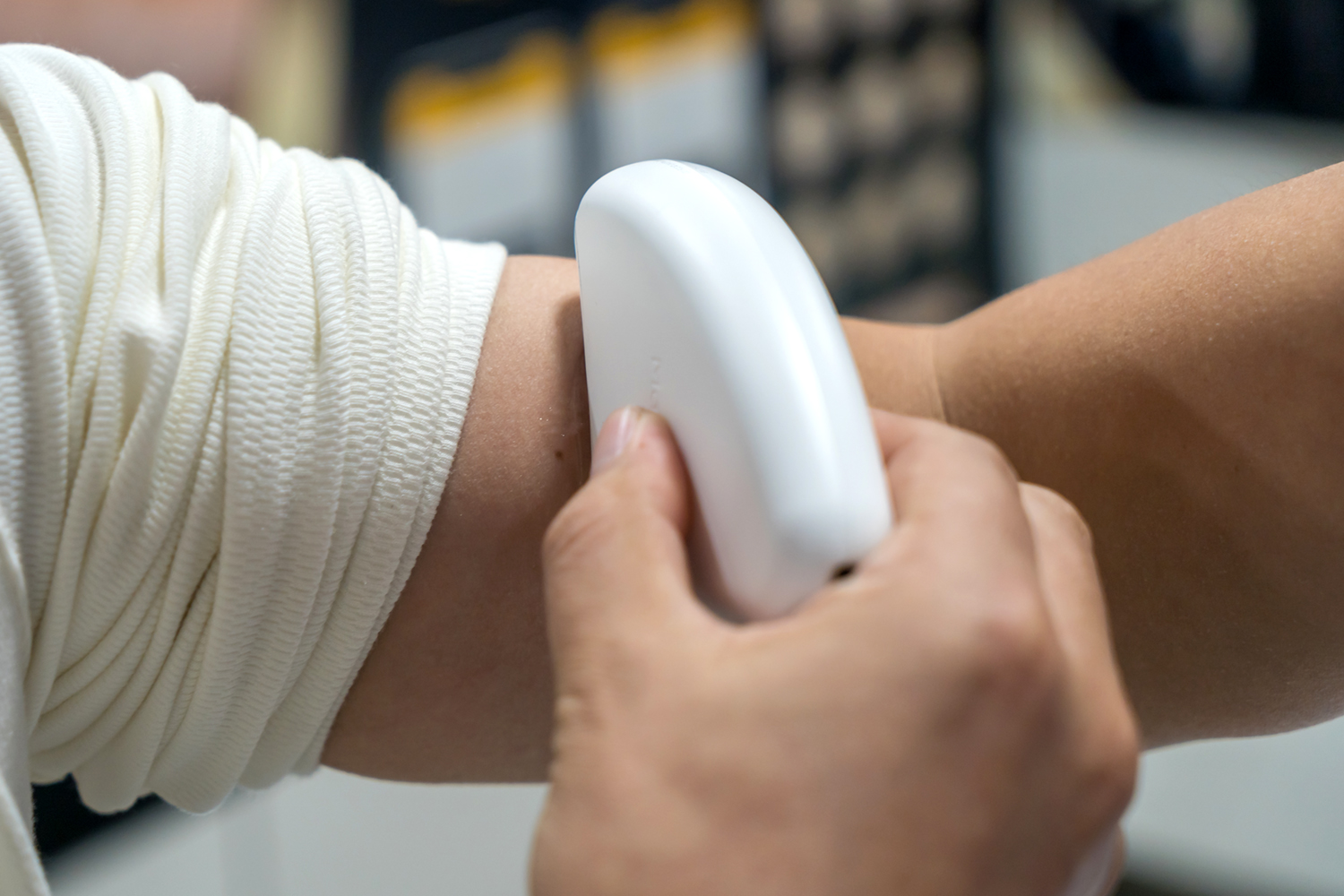
Marvoto is a Chinese startup aiming to use similar technology to measure muscle and body fat. The Z2 is a pocketable device that works with an app to measure those things and show all pertinent data. To do it, you use the device with ultrasound gel (you can find that easily), and take measurements along the triceps, biceps, abdomen, waist, thighs and calves to get a full reading. However, you can also do individual readings at any time. This is great if you want to keep track of progress in losing weight or building muscle. The company says it designed the device with a fin as a testament to how sharks are one of the few animal species that never have cancer.
Wearing better comfort
A couple of vendors took aim at improving the comfort in women’s shoes. A truly integrative approach comes from a collaboration between an American orthopedic surgeon, Dr. Taryn Rose, and Italian architect-turned-shoe designer, Enrico Cuini. The tech behind it is ALIA (Active Lift in Alignment), which can take 3D scans of a woman’s feet to then create a pair of heels with a customized fit that provides better support. In other words, they “dissipate pressure across a greater foot surface area to dynamically allow for pressure relief, stability and energy return, making even the highest, sexiest stilettos comfortable.”
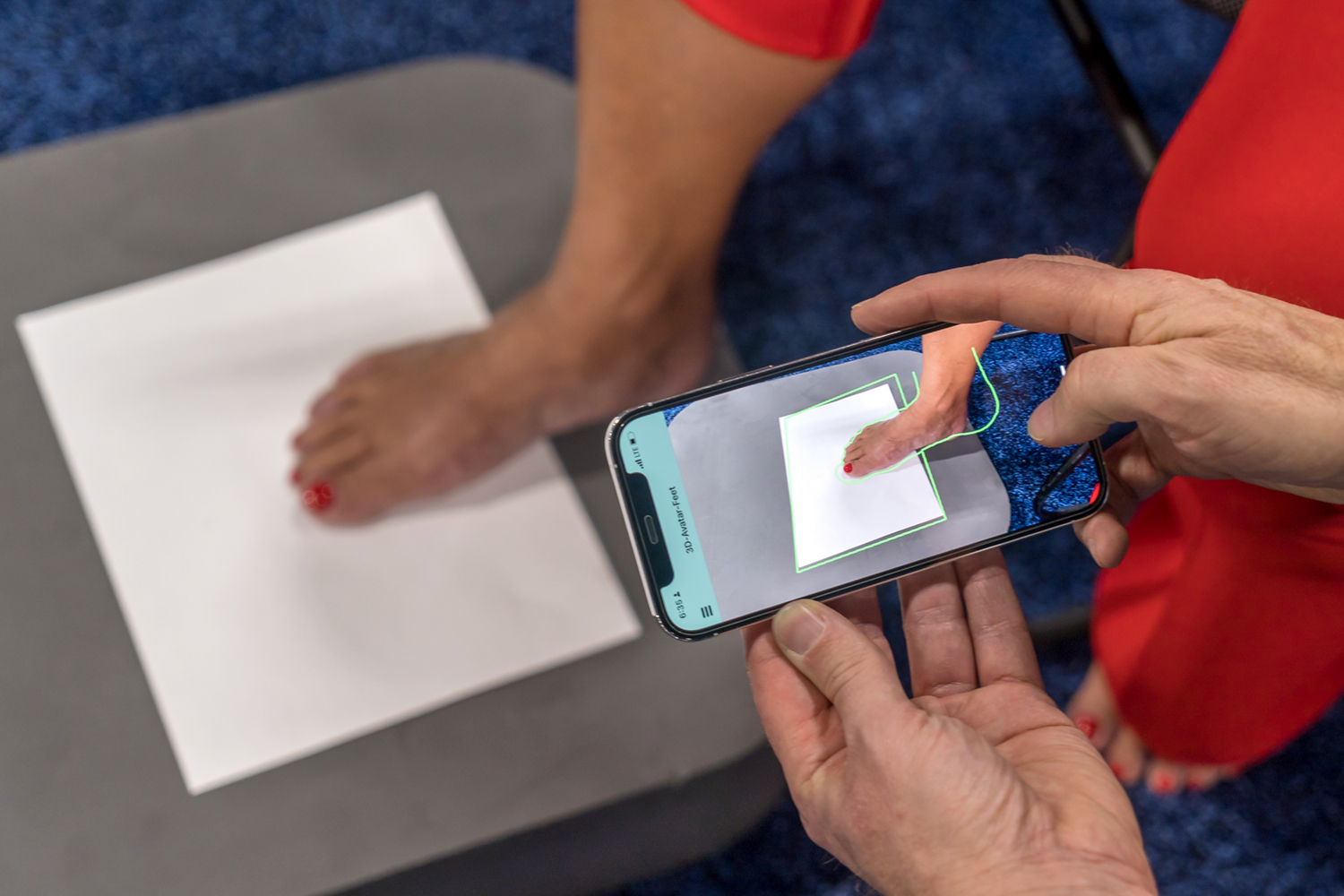
This tech applies to men’s shoes, too, so it’s not only for the ladies. Retail stores could also use the tech through a platform customers can step on where onboard scanners do the work of creating a digital mold of their feet. Artificial intelligence then steps in to determine what the best fit would be or what kind of custom insole or orthotic could be made instead. You can also do this yourself through the Enrico Cuini website where you follow instructions on how to take and upload photos of your feet to get the right measurements.
Another Italian brand, GAIT-Tech, developed a smart insole that helps provide proper cushioning and redistribute pressure along the metatarsal heads at the front of the feet for a more comfortable fit at all times. Designer Diego Dolcini came up with it, and the premise is to integrate the insole (made of recycled reinforced polymer) into the shoe at the factory. Since it would be built-in, it wouldn’t affect the shoe’s look or design, and wouldn’t require adding something on that might fall off later.
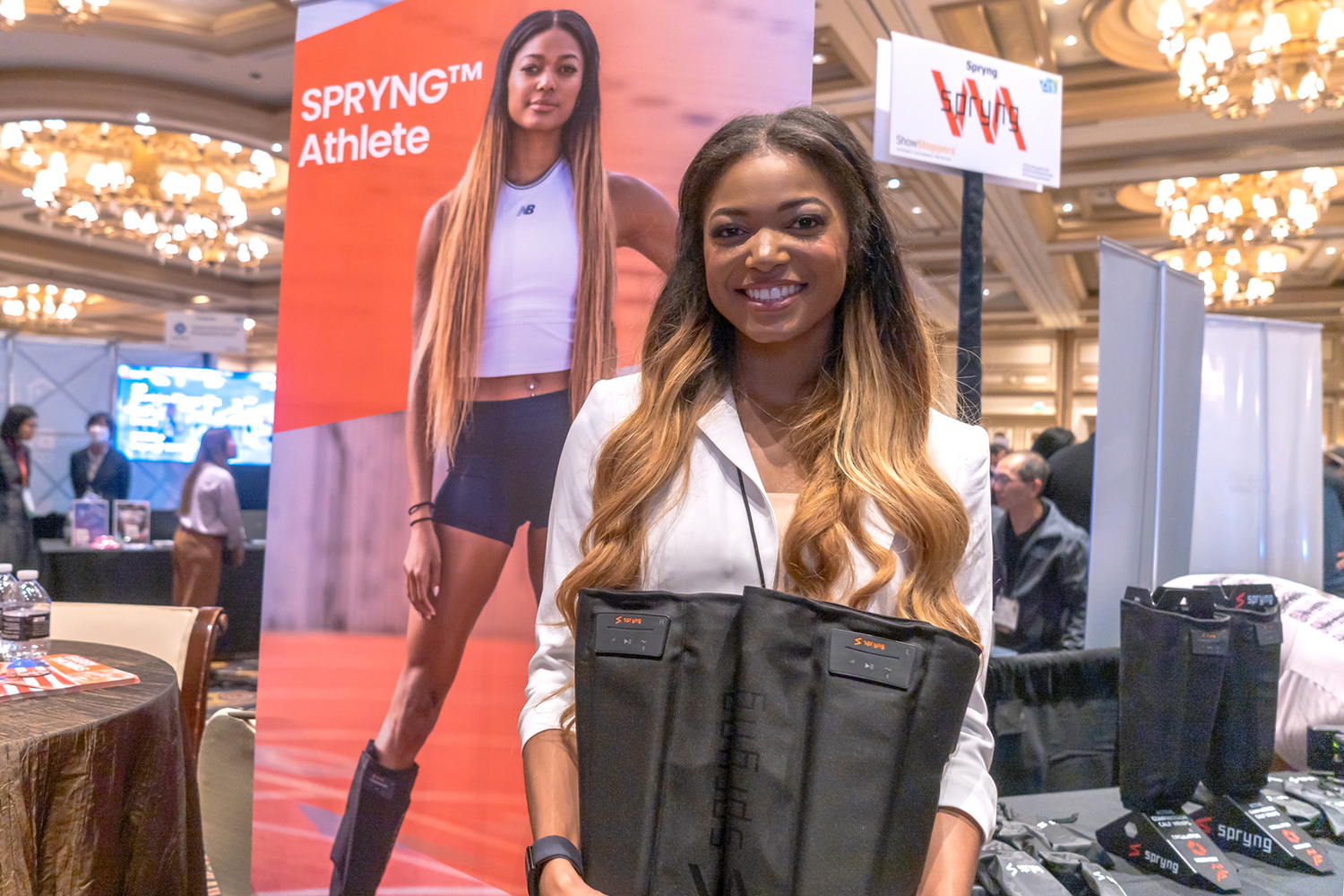
In a similar vein with a different focus, Spryng 2.0 focuses on athletes who need to recover faster after a run, workout or game. The product is two compression wraps you wrap around your calf and shin that, when paired with the Spryng app, contract and expand to increase blood flow and break up buildup of lactic acid. U.S. Olympian Gabby Thomas was on hand to present the device and speak to her experience, which she says started in November 2022. Since then, she always wears them after any workout to recover faster.
I asked if the Spryng 2.0 could help with blood clots, given the improved circulation, and it’s unclear whether the wraps would make a difference, though it’s not out of the realm of possibility. The wraps aren’t medical devices, so Spryng can’t make such claims, but it is something to look out for as this product continues to evolve.
Other cool health tech
Neutrogena has been at this before with its MaskiD 3D printed sheet masks and Skin360 app, but now it added something new to the mix with SkinStacks. This collaboration with Nourished, a brand that makes 3D-printed gummies filled with nutrients, aims to offer people highly personalized skin supplement gummies. Go through the assessment in the Skin360 app, including taking photos of your skin and answering questions, and you can then see what kind of nutrient stack it recommends for you. If you want to proceed, Nourished will produce your own personal gummies based on what you need and ship them to you. The jury’s still out on whether these supplements are different than others, but it is an interesting way to address daily epidermal health.

How about a bed frame that moves or adjusts itself while you sleep? The ErgoSportive Smart Bed tracks your sleep and lets you set it to any one of three presets, so you can elevate your head to read or watch TV, as well as elevate your legs if you need to do that for health and recovery. It has a snoring tracker to adjust your position and elevate you enough to stop it, which your partner would probably appreciate. The catch is that the bed only works with select Garmin wearables, so you won’t get the full experience unless you have one that works. Sorry, Apple Watch fans.

If you’re not familiar with the Oura Ring, new competitors are now in the mix. Rather than wear a smartwatch, you can get the same tracking and metrics from a ring on your finger. The Movano Evie Ring was designed for women, it monitors a variety of things, like resting heart rate, heart rate variability, skin temperature, blood oxygen (SpO2), menstrual/ovulation cycles and sleep quality. French startup Circular also debuted its Circular Ring with newer features and a redesigned app with a focus on managing stress to add to the existing activity tracking and fitness options.
The Cray X and Apogee Power Suit from German Bionic look like something out of a sci-fi movie, but their purpose could change everything about manual labour. Anyone wearing the Cray X can expect up to 66 lbs. of support in lifting or carrying any object, plus easier walking to reduce fatigue over longer days. The hope is that workers in repetitive or physically demanding fields could find some relief when doing their jobs, reducing potential short or long-term injuries. This won’t be something you can just go out and buy, as it will sell to enterprises and businesses looking to give their workers a mechanized helping hand.
A sign of things to come
It was no surprise health and wellness were major themes at the world’s largest tech conference. Health tech continues to grow both in scope and sophistication, taking what was previously exclusive to medical facilities to the home and office for access and convenience that would’ve been unheard of before. Look for this category to keep on growing and offering new, innovative ways to take better control of your health.